The best way to see India’s ‘great hits’
This tour of the so-called Golden Triangle, which includes the Taj Mahal, is a gentle introduction to a country that overwhelms the senses.
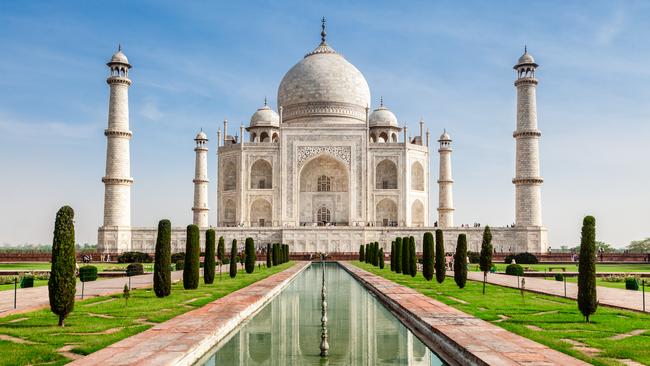
It’s harvest season in Rajasthan and families are in the fields, slashing through stands of golden wheat with handheld scythes and gathering it into bushels. In the glaring heat of this desert state, it looks like a hard way to make a living. The countryside is as flat and parched as a chapati but there is colour everywhere. On the highways, trucks decorated in garlands of marigolds and gaudy paint jobs blare Indian pop music as they weave crazily around motorcyclists. Women in saris of vivid blue, pink and yellow, like walking advertisements for the CMYK colour chart, carry bundles of firewood on their head.
“Without colour, this country would be dead,” says our guide, Virendra Kohli, when someone remarks on the vibrant contrasts with the dusty landscape. “It’s not a dead desert. It’s alive, and very, very lovely.”
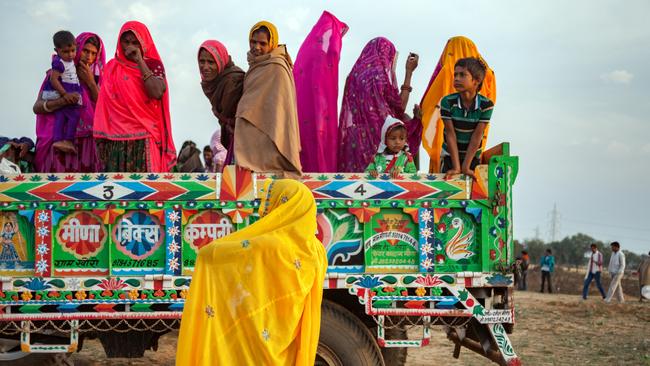
We’re on our way to Jaipur, capital of Rajasthan, as part of a nine-day Luxury Gold tour that takes in some of India’s most famous sights, including Delhi’s Jama Masjid mosque, the Taj Mahal in Agra and Jaipur’s Amber Fort. The so-called Golden Triangle is a gentle introduction to a country that can overwhelm the senses. In some ways it’s a greatest-hits tour of India. It’s also a swing through some of the most impressive architectural feats of revered Mughal emperor Shah Jahan, who took the throne in 1628 and ruled for 30 years.
It was Shah Jahan who moved the imperial capital from Agra to Shahjahanabad, now known as Old Delhi. We wander the historic walled city’s higgledy-piggledy streets, buzzing with commerce, crowds and an incessant chorus of tuktuks and horns. The clash of old and new is glaring. Pedal-powered carts piled high with fruit vie for space amid shoals of scooters. Specialist stores are stacked to the ceiling with mobile phones and electronics, yet down an alleyway, a young man is diligently pressing business shirts with a weighty wooden-handled iron heated with charcoal.
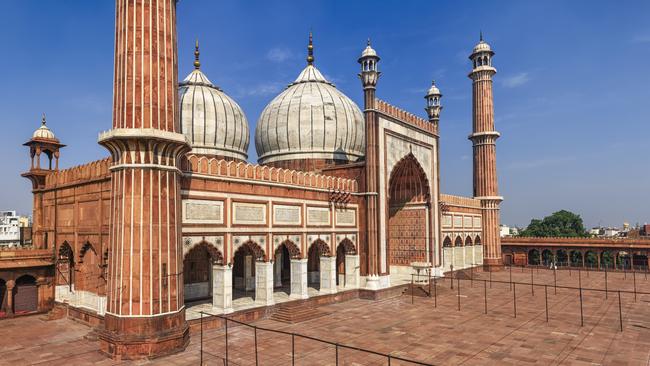
At the vast Jama Masjid mosque, built in the 1650s on Shah Jahan’s orders, we gaze in awe at the red sandstone prayer hall, topped with three bulbous marble domes, and the stadium-sized courtyard that fills with 25,000 worshippers on important days in the Islamic calendar. (As India’s second most common religion after Hinduism, Islam accounts for 14 per cent of the population.)
At Agra’s Fort, we shelter from the fierce sun among the pillars of the breezy Hall of Public Audience, another of the emperor’s creations. Here, he would receive requests and complaints from members of the public and meet state officials; hidden from sight, women could eavesdrop on the goings-on from behind screened windows. The fort is also where Shah Jahan’s reign came to a somewhat undignified end. He was imprisoned here for eight years – albeit in an exquisite marble palace – by the son who claimed the top job, killing his fraternal rivals in the process.
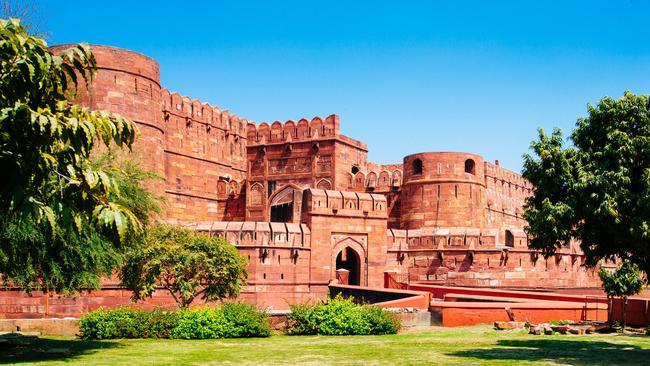
Our tour group of eight, a mix of Brits, Australians and Americans, couples and singles of diverse backgrounds, is a far more harmonious bunch. There’s convivial chatter, and the odd nap, during stints on our minibus, which proves to be a welcome retreat from the hubbub and heat with its plush white leather seats and Esky full of chilled water bottles. Our itinerary includes some diverting excursions among the big-ticket stops. We enjoy a thali-plate dinner in a historic restaurant at Jaipur’s Amber Fort, and sit down to tea and snacks (the “high tea” description is a bit of a stretch) on the rooftop of the City Palace.
At Kachhpura, outside Agra, a local guide explains how an NGO project is helping to boost the prospects and maternal health of girls and women in the village. Making way as herds of goats are ushered back home for the evening, we stroll to the village mosque, dating back to the early 1500s and the reign of Humayun. We marvel at the skill of inlay workers who polish impossibly minute fragments of lapis lazuli and malachite to be inserted into decorative marble table tops. An undisputed highlight is our two days in Ranthambore National Park, bumping along rocky roads in open-top Jeeps on the lookout for tigers. Our patience is rewarded with an unforgettable 45 minutes in the presence of a regal tigress having an afternoon nap. Visits to a rug warehouse and jewellery store feel a little forced, placing us in situations of obligatory shopping. But there’s space, too, for unscripted moments – sipping cups of richly brewed chai from a street vendor; watching a field full of cricketers at play as the sun sets over the Taj Mahal.
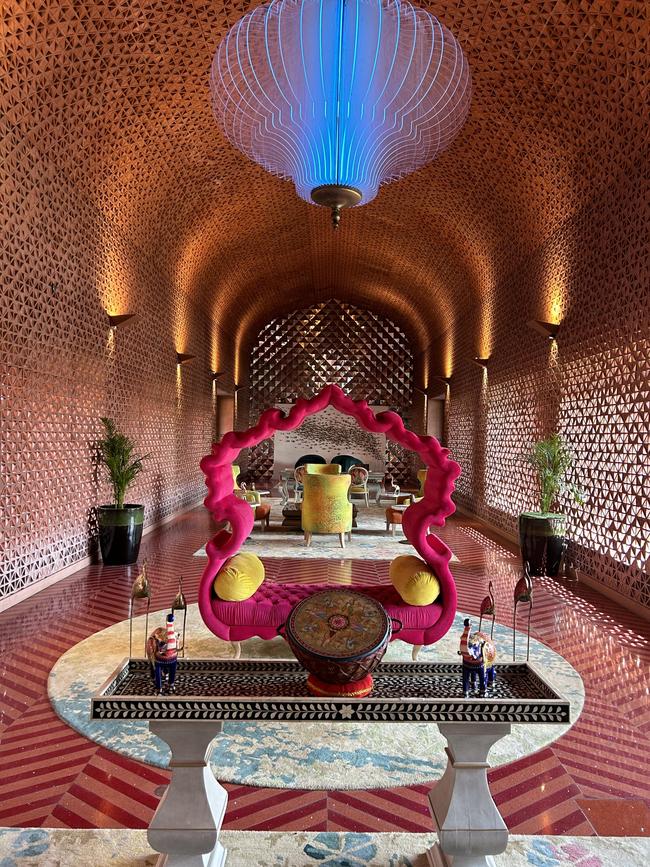
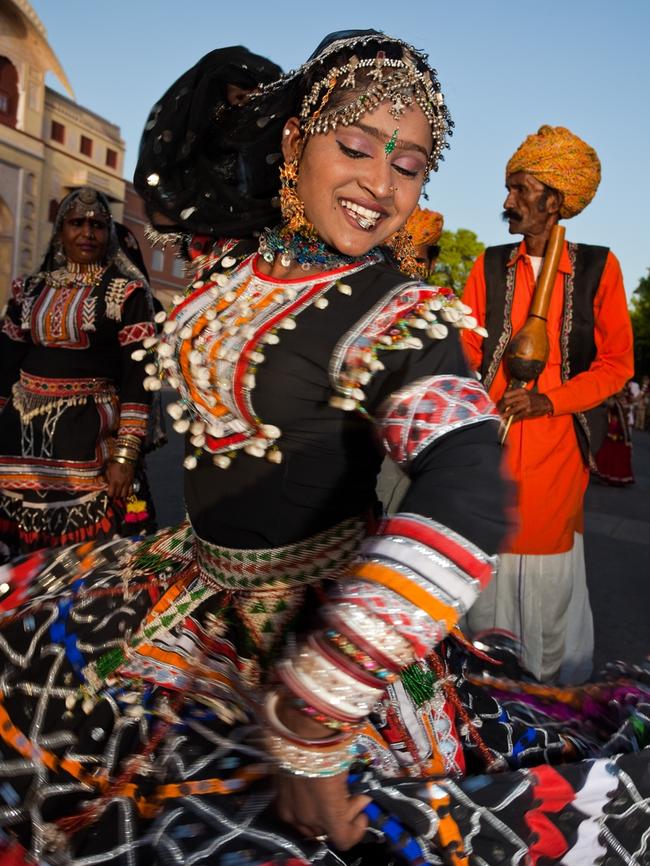
Accommodation in Delhi, Ranthambore and Jaipur is superb. The hotels are a mix of old-school elegance and modern interpretations of classic Mughal design. The lobby of Delhi’s Leela Palace Hotel has the most impeccable bouquets of yellow roses I have seen. Nahargargh Ranthambore’s swimming pool, designed like a luxurious step well and overlooked by stone elephants, is sensational. In Jaipur, Taj Devi Ratn hotel resembles a massive red fort itself, nestled in the foothills of the Aravalli mountains. I love the vibrant velvet seating in the lobby, which takes the shape of a Mughal arch and gives it a 21st-century makeover. The odd one out in this otherwise strong quartet is the Taj Hotel and Convention Centre in Agra. Its rooftop infinity pool delivers fantastic views of the city but rooms and facilities are disappointing. Honestly, a brain surgeon could operate under the glaring lights of the main restaurant, but we’re not here for the hotel.
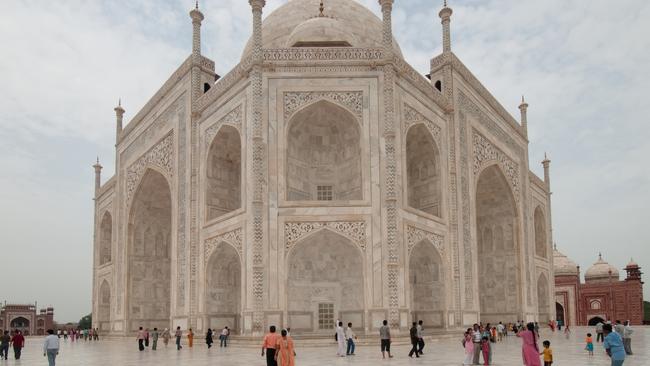
I’m unprepared for the beauty and scale of Agra’s Taj Mahal, Shah Jahan’s extravagant memorial to his favourite queen. The white marble of the tomb has an ethereal quality in the soft light of dawn, and as the sun rises higher it positively gleams. The intricacy of the semiprecious stone inlay and bas relief carvings, and the height of the Mughal arches, are astonishing. But I’m unprepared, too, for the photographic imperative the monument seems to represent for tourists, many of whom have dressed for the occasion. We are under considerable pressure to have portraits taken with one of the many local photographers spruiking their services at the entrance. There’s a queue to grab snaps at the Diana Seat, where the Princess of Wales posed demurely back in 1992, and tourists armed with selfie sticks jostle for spots with a clear view. In the central chamber that houses the cenotaphs for Shah Jahan and his beloved wife, signs clearly request that visitors refrain from taking photos, yet I see several who are unable to resist temptation. This may be India’s most beautiful building but there’s a crassness to the scene. Take yourself away from the clamouring hordes, however, and you can appreciate the Taj for what it is – magnificent.
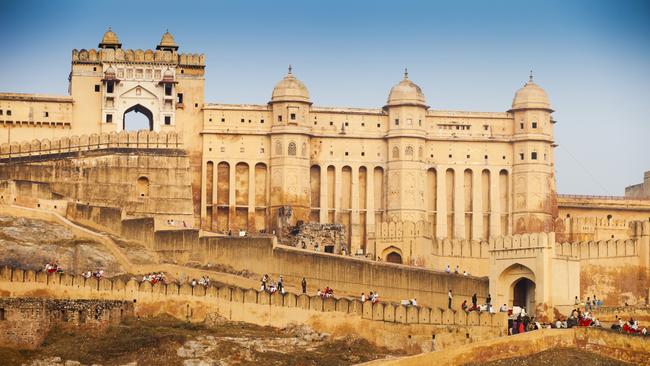
There’s nothing crass about Jaipur in the midst of exuberant festivities. We arrive in the Pink City, by chance, on the last day of Ramadan and at the climax of the Hindu Gangaur festival. Muslim men and boys in crisp white kurtas and kufis throng the roads on scooters, getting ready for night-time family feasts. Hindu women congregate in red and gold saris, carrying offerings to temple to pray for their husbands’ welfare. In the Amber Fort, locals are handing over biscuits, fruit and even whisky to priests, who redistribute the goodies to worshippers and a statue of Parvati, also known as Gauri, the main consort of Lord Shiva.
The festivities come to a head in the late afternoon after we’ve strolled through the City Palace, home to the Jaipur royal family. This sprawling complex houses countless treasures: sterling silver urns used to carry the maharaja’s drinking water – from the Ganges, no less – on a trip to England; chambers covered from floor to ceiling in glass mosaics and mirrors; antique royal attire; an armoury of sabres, daggers and pistols from the 1800s.
When we emerge, minds blown, back on to the streets, the sense of anticipation is palpable. Dancers, musicians and cultural groups, along with a menagerie of horses, camels and an elephant that has been given an elaborate make-up job, are gathering in the city centre for a grand parade. Virendra, who is always quietly project-managing our itinerary in the background, has secured us prime seats on a veranda overlooking the action, and we watch as the crowd swells.
But something unexpected is happening. The sky darkens and the wind whips at the strings of coloured flags hung across the road. Lightning flashes. Down the raindrops come, scattering spectators and washing away chalk artworks that have been painstakingly rendered on the pavement. The brief storm, a rare occurrence in this arid city, leaves us damp and windswept but brings relief after the heat. As quickly as it arrived, the squall blows past and the parade gets under way.
Smiling gents astride camels show off their extraordinarily long moustaches while women in bejewelled black dresses twirl to frenzied drumming. There are military bands and, in a wonderful display of cultural dissonance, two magnificently turbaned chaps play bagpipes adorned with strings of colourful pompoms and bells. The crowd cheers wildly when the elephant, carrying two mahouts, makes its entrance. It plods majestically along the route, stopping occasionally to accept cash donations from members of the public with its trunk. The current maharajah, the dashing Padmanabh Singh, who only weeks before was playing polo in Sydney, makes an appearance towards the end, paying his respects to a statue of goddess Gauri borne on a sedan-chair. And with her passage, the parade draws to a close and the crowd disperses.
It’s been a rowdy riot of colour and joy. The essence of India, distilled in one place and one day.
In the know
Luxury Gold’s nine-day Essence of India with Ranthambore runs from late October to mid-April next year, with additional departures available for 2026 and 2027. The tour, which averages 18 guests, includes airport transfers, all road and rail transport, internal flights from Jaipur to Delhi, meals and beverages, including beer and wine with dinner, and gratuities. From $6526 a person, twin-share.
Penny Hunter was a guest of Luxury Gold.
If you love to travel, sign up to our free weekly Travel + Luxury newsletter here.



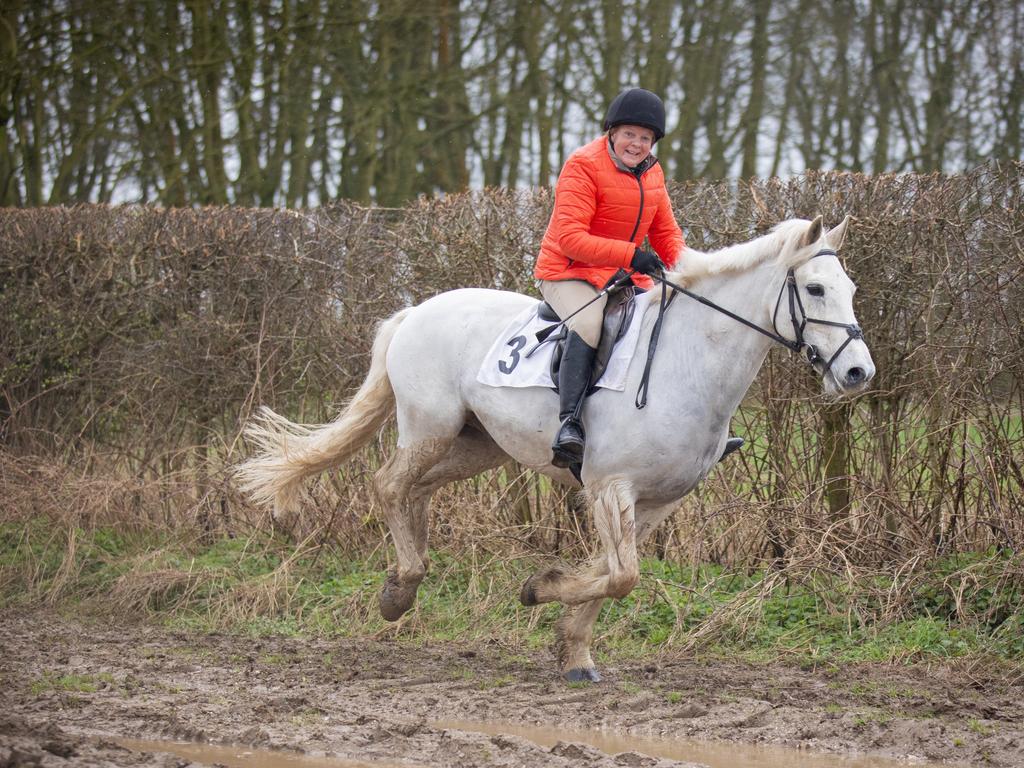
To join the conversation, please log in. Don't have an account? Register
Join the conversation, you are commenting as Logout